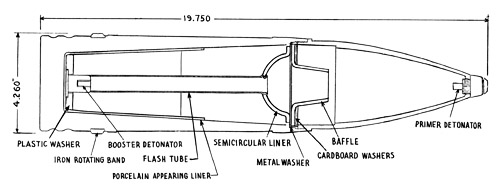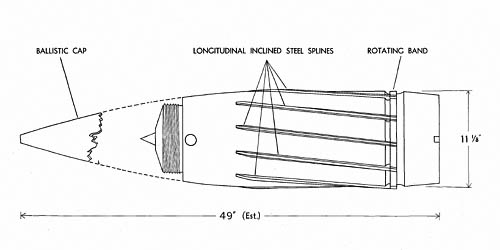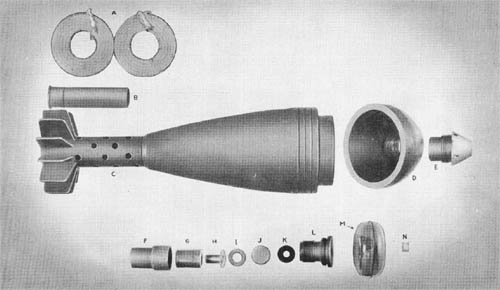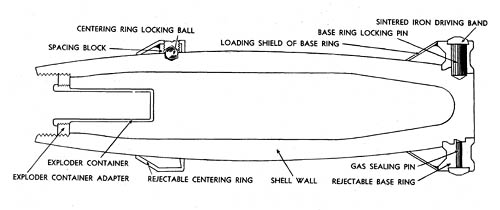
This projectile, which is fired from the German 10.5 cm L.F.H. 18 and L.F.H. 18M, has a steel case with a 1/8 inch cement liner built up on the wall of the filler chamber. This liner extends from the base to about one-half the length of the chamber. The ogive is composed of a metal resembling an aluminum alloy or German light metal. It screws into the projectile, holding all components of the filler in place.
The fuze, AZ 38, is made of aluminum and carries the primer detonator. It is armed by centrifugal force, and contains no other safety features. There are no delay adjustments, all functioning being instantaneous on percussion.
The explosive filler, composed of cyclonite with 5% of montan wax, is pressed into two pellets and enclosed in a waxed paper carton. A central hole is bored through both pellets for the full length of the charge. The forward pellet is hollowed out to accommodate a hemispherical metal liner. The aluminum flash tube, which passes through the hole in the center of the explosive pellets, is attached to the liner by means of a pressed collar. A heavy metal collar or baffle is attached to a washer on the rim of the liner. The purpose of the baffle may be to direct the flame of the primer detonator down through the flash tube, or it may have a use in developing the jet effect of the hollow charge.
A booster pellet of PETN and montan wax is contained in a cylindrical metal cup at the base of the rear pellet; a detonator in an aluminum case is located in the upper portion of this explosive in direct alinement with a flash hole in the bottom of the booster cup. This booster is ignited by the combined flame and blast of the fuze detonator which passes through the flash tube.
SPECIFICATIONS
| Cartridge case, length | 6.10 ins. | |
| diameter at mouth | 4.48 ins. | |
| diameter of rim | 4.91 ins. | |
| Projectile as fired | 26 lb., 14 oz. | |
| Explosive filler w/o booster | 3 lb., 4.58 oz. | |
| Primer detonator | .07 oz. | |
| Booster explosive w/o detonator | .18 oz. | |
| Detonator (in booster pellet) | .03 oz. | |
| Wt. of normal propelling charge | 5 lb., 3.43 oz. |
German: p. 310



